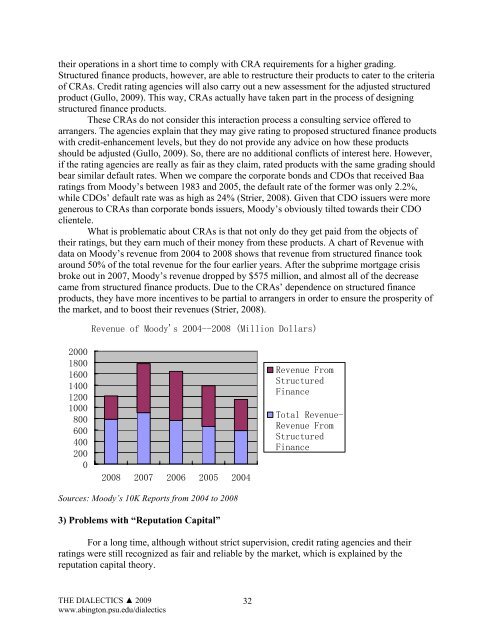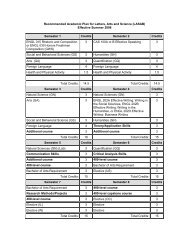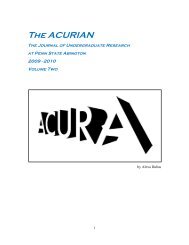Vol. III - Penn State Abington
Vol. III - Penn State Abington
Vol. III - Penn State Abington
You also want an ePaper? Increase the reach of your titles
YUMPU automatically turns print PDFs into web optimized ePapers that Google loves.
their operations in a short time to comply with CRA requirements for a higher grading.<br />
Structured finance products, however, are able to restructure their products to cater to the criteria<br />
of CRAs. Credit rating agencies will also carry out a new assessment for the adjusted structured<br />
product (Gullo, 2009). This way, CRAs actually have taken part in the process of designing<br />
structured finance products.<br />
These CRAs do not consider this interaction process a consulting service offered to<br />
arrangers. The agencies explain that they may give rating to proposed structured finance products<br />
with credit-enhancement levels, but they do not provide any advice on how these products<br />
should be adjusted (Gullo, 2009). So, there are no additional conflicts of interest here. However,<br />
if the rating agencies are really as fair as they claim, rated products with the same grading should<br />
bear similar default rates. When we compare the corporate bonds and CDOs that received Baa<br />
ratings from Moody’s between 1983 and 2005, the default rate of the former was only 2.2%,<br />
while CDOs’ default rate was as high as 24% (Strier, 2008). Given that CDO issuers were more<br />
generous to CRAs than corporate bonds issuers, Moody’s obviously tilted towards their CDO<br />
clientele.<br />
What is problematic about CRAs is that not only do they get paid from the objects of<br />
their ratings, but they earn much of their money from these products. A chart of Revenue with<br />
data on Moody’s revenue from 2004 to 2008 shows that revenue from structured finance took<br />
around 50% of the total revenue for the four earlier years. After the subprime mortgage crisis<br />
broke out in 2007, Moody’s revenue dropped by $575 million, and almost all of the decrease<br />
came from structured finance products. Due to the CRAs’ dependence on structured finance<br />
products, they have more incentives to be partial to arrangers in order to ensure the prosperity of<br />
the market, and to boost their revenues (Strier, 2008).<br />
Revenue of Moody's 2004--2008 (Million Dollars)<br />
2000<br />
1800<br />
1600<br />
1400<br />
1200<br />
1000<br />
800<br />
600<br />
400<br />
200<br />
0<br />
2008 2007 2006 2005 2004<br />
Revenue From<br />
Structured<br />
Finance<br />
Total Revenue-<br />
Revenue From<br />
Structured<br />
Finance<br />
Sources: Moody’s 10K Reports from 2004 to 2008<br />
3) Problems with “Reputation Capital”<br />
For a long time, although without strict supervision, credit rating agencies and their<br />
ratings were still recognized as fair and reliable by the market, which is explained by the<br />
reputation capital theory.<br />
THE DIALECTICS ▲ 2009<br />
www.abington.psu.edu/dialectics<br />
32







